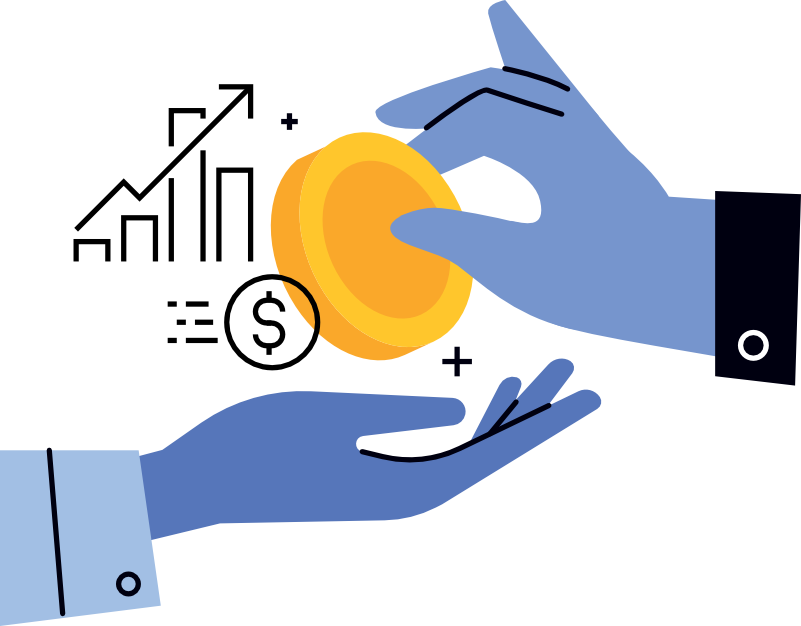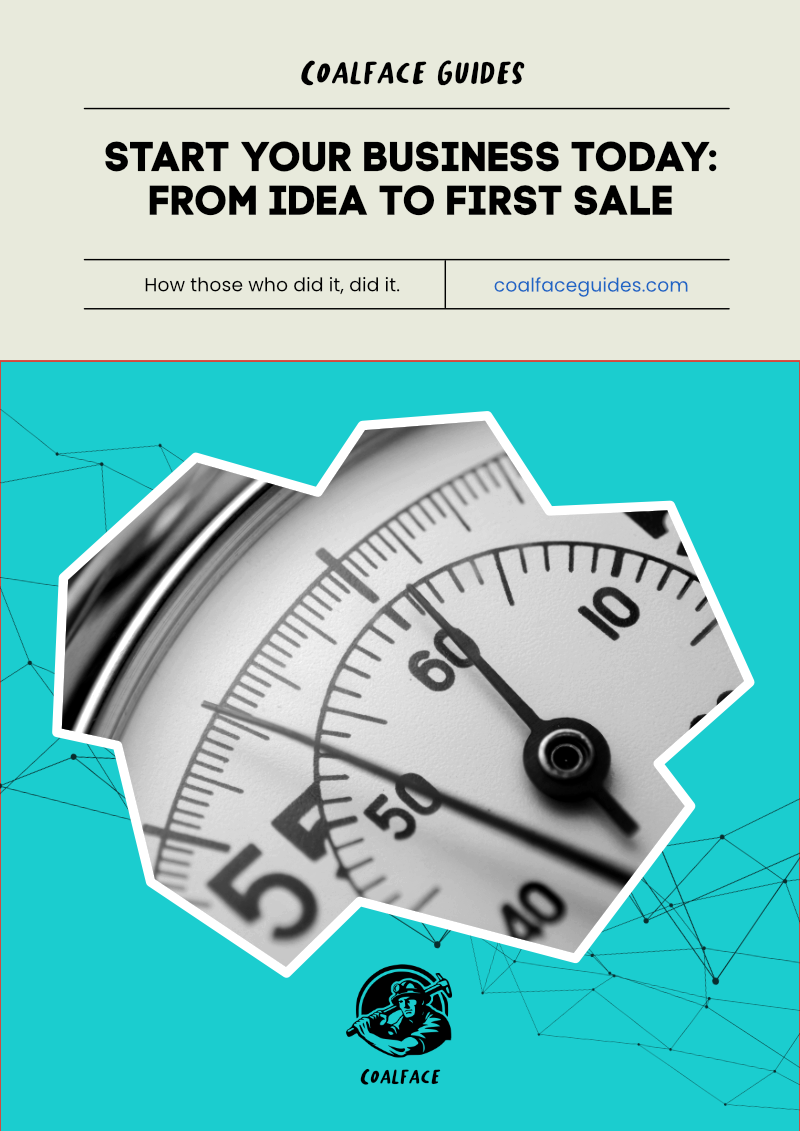Your cart is currently empty!
Starting a Business (Forget What You’ve Been Told)

Starting a Business the Right Way
Starting a business is one of the most exciting – and intimidating – steps you can take. The internet is full of advice telling you to design logos, build websites, write business plans, and invest in branding before you even talk to a customer. It sounds professional, but in reality, it’s often the fastest route to wasted time and money.
The truth is simpler: businesses don’t begin with logos or long plans. They begin when someone pays you for solving a problem they care about. Until that happens, everything else is decoration.
This guide strips away the outdated advice and shows you a modern, practical approach to starting a business. You’ll learn how to:
- Find a problem worth solving.
- Create an offer people value.
- Sell to a stranger before you spend.
- Price with confidence.
- Keep risk low and momentum high.
If you’re serious about starting a business but want to avoid the traps that cause so many new ventures to fail, this is your roadmap. Clear, lean, and focused on what actually works today.
Table of Contents for Starting a Business
- Introduction: The Startup Lie We’ve All Been Sold
- Do You Really Need a Business Plan to Start? (Spoiler: No)
- Step 1 – Find a Problem Worth Solving
- Step 2 – Find a Stranger Willing to Pay You
- Step 3 – Price for Profit, Not Popularity
- Do You Need a Website When Starting a Business? (Only if it Helps You Sell)
- How Much Does It Cost to Start a Business? (Less Than You Think)
- Ditch the Business Plan, Keep the One-Page Offer Map
- Starting a Business Means Smart Risk, Not Big Risk
- Avoid These 5 Rookie Mistakes When Starting a Business
- Overcoming Fear, Doubt, and Perfectionism
- The REAL Way to Start a Business (3 Steps)
- Conclusion: Sell First, Start Small, Learn Fast
- Call to Action: Ready to Sell Before You Build?
- FAQ Section
1. Introduction: The Startup Lie We’ve All Been Sold
You’ve probably heard the usual checklist for starting a business: build a website, get a logo, order some stock, write a detailed plan.
It sounds sensible. But for many people, following that script is what leads to wasted time and money. By the time the branding is polished and the website is live, it’s possible to discover there isn’t much interest in the product at all.
That’s the part nobody emphasises: businesses rarely collapse because the design was weak or the plan too thin. They fail because there was never real demand. And demand only shows itself when a stranger – someone with no personal reason to support you – chooses to pay.
That’s where a business truly begins. Not with paperwork or polish, but with proof that someone values what you’ve made enough to buy it.
This guide is about working in that order. We’ll look at how to:
- Test an idea before investing heavily.
- Keep your first version lean and inexpensive.
- Focus on actions that create momentum, not the ones that just keep you busy.
When you approach it this way, you avoid chasing the image of being “ready” and start building something that actually works in the real world.
And the first step is to challenge another bit of startup advice that refuses to die: the belief that you must start with a business plan.
2. Do You Really Need a Business Plan to Start? (Spoiler: No)
Long, formal business plans are seductive. They look professional, they feel safe, and they give the impression that you’re moving forward. But a 30-page document doesn’t reveal what matters most: whether real people are willing to pay for what you’re offering.
A better starting point is something much simpler: a one-page offer map. Instead of predicting the future in detail, it forces you to focus on the essentials:
- The problem you’re solving.
- The people you’re helping.
- The offer itself and how it delivers value.
- How the money works (your price and costs).
With this in hand, you can start conversations, gather feedback, and make quick adjustments. You’ll learn faster, reduce your risk, and be in a position to act on real signals – not just assumptions.
Once you’ve sketched out a simple offer map, the next question is: how do you know the problem you’ve chosen is one people actually care about?
3. Step 1 – Find a Problem Worth Solving
You might start with passion, or even what feels like a brilliant idea. But none of that matters unless other people care enough to act on it – whether that means paying, signing up, or changing their behaviour.
So how do you uncover problems that are genuinely worth solving?
- Listen in on real conversations. Browse forums, social media threads, Reddit, and local community groups. Pay attention to recurring complaints and frustrations. If the same pain point keeps surfacing, that’s a strong clue.
- Ask people directly. A simple question works: “If someone solved X for you, would you pay for it?” Their reaction—hesitant or immediate—tells you a lot about whether the problem is pressing.
- Look for money already in motion. If people are spending on stopgap solutions, even poor ones, the demand is real. Weak products that still get bought are a signal that customers are hungry for something better.
Your goal here isn’t to brainstorm in isolation but to ground your idea in evidence. The problems worth solving are the ones that show up in people’s lives again and again, and that they’re already trying – sometimes clumsily – to fix.
Once you’ve spotted a problem that looks real, the next challenge is to see if anyone values the solution enough to pay for it.

4. Step 2 – Find a Stranger Willing to Pay You
This is the step that most people skip because it feels uncomfortable – but it’s also the one that separates ideas from businesses. It’s the ultimate proof that you’re onto something.
At this stage, you don’t need a polished product or finished service. What you do need is proof that someone beyond your friends and family is willing to exchange money for your idea. Without that, everything else is just theory.
Here’s how to approach it:
- Pitch to strangers. Share your offer with people who don’t know you – through online groups, LinkedIn connections, or even casual conversations in your network. Their reactions will be far more honest than those who feel obliged to encourage you.
- Treat “no” as data. A rejection isn’t failure; it’s feedback. Every “no” helps you refine what you’re offering or shows you where demand might not exist.
- Aim for pre-sales. If you can secure a commitment – or better, actual payment – before you’ve built the full product, you’ve gathered the strongest validation possible.
Getting even one stranger to pay is a turning point. It proves that the problem is real, the solution resonates, and you’re not just building in a vacuum. From there, you can confidently take the next step.
Once you’ve proved that someone is willing to pay, the next decision is how much to charge – and this choice can make or break your business.
5. Step 3 – Price for Profit, Not Popularity
Pricing isn’t just a number on a page; it shapes how people see your offer and how sustainable your business will be. Many founders make the mistake of pricing to be liked rather than pricing to last.
Charging too little is just as dangerous as overpricing without thought. Undervalue your time, skills, or product, and you risk one of two outcomes: constant burnout or running at a loss. Neither is a foundation for growth.
A healthier starting point is to aim for solid margins – ideally five times your costs if the model allows it. This gives you room to cover expenses, reinvest, and still pay yourself fairly.
When setting a price, focus on value, not just inputs. Ask: What outcome or transformation am I delivering? People will pay more for relief from a painful problem or a meaningful result than for a bare calculation of hours or materials.
Finally, avoid building your strategy around being “the cheapest.” Discounts and race-to-the-bottom pricing can bring quick wins, but they trap you in cycles of undervaluation. Customers who come for the lowest price rarely stay loyal, and you end up competing on cost instead of quality or results.
Price with confidence, and you set the tone for a business that can endure.
With your pricing set, the next question most people ask is whether they now need a full website. The answer depends on what actually helps you sell.
7. Do You Need a Website When Starting a Business? (Only if it Helps You Sell)
The short answer: only if it supports your ability to make sales.
For some businesses, especially product-based ones, a simple online store can be useful. Customers need an easy way to browse, place an order, and pay. But even here, “simple” matters more than “perfect”.
If you’re offering a service or something consultative, you may not need a full site at all. A single landing page with a clear description, a booking form, and a way to pay is often enough. In the earliest stages, direct conversations, referrals, and outreach usually matter more than a high-design web presence.
It’s tempting to spend weeks polishing design and branding, but these are rarely what wins a customer’s trust at the start. What matters is clarity. Someone should be able to look at your page – or even hear you explain your offer – and immediately understand:
- What you provide.
- Why it’s useful or valuable to them.
- How they can say “yes” and move forward.
When those three points are obvious, you’ve got all the online presence you need to start. Everything else can grow later, once the business has momentum.
After sorting out how you’ll present your offer, the next question most people worry about is cost. But here’s the truth: you don’t actually need to spend much – if anything – until someone pays you.

8. How Much Does It Cost to Start a Business? (Less Than You Think)
A common myth is that you need to invest heavily before you can start. Buy inventory. Pay for suppliers. Lock in a service contract. The problem with this approach is that you’re spending money before you’ve proved there’s a customer. That’s how so many businesses burn cash without ever making a sale.
In reality, there’s very little to buy at the beginning. Your first real expenses only appear once you have your first paying customer:
- Product-based business? You only need to acquire or make stock after someone has placed (and ideally paid for) their order.
- Service-based business? The main cost is your time. If you need specialist tools or software, you can buy them once a client has committed. (I come from a software background and it’s common practise to secure a customer before engaging a developer. At the first client meeting there is nothing to show the customer: our role is simply to understand their pain points and deliver the solution.)
- Digital business? Often, the only initial “cost” is your effort. Hosting, domains, and software can wait until you know there’s demand.
This flips the old advice on its head. Instead of loading up on expenses “to be ready,” you hold back until revenue justifies the spend. By aligning costs with actual sales, you protect cash flow, avoid waste, and keep the risk low.
Bottom line: there’s almost nothing to pay for until a customer is willing to pay you. Validation comes first – spending comes after.
Once you understand that costs should follow customers, not come before them, you’re ready to simplify everything into one clear tool that keeps you focused: the one-page offer map.
9. Ditch the Business Plan, Keep the One-Page Offer Map
Back in Section 2 we challenged the need for a long, formal business plan. Now it’s worth returning to the alternative that actually helps you move forward: a single-page offer map.
This isn’t about predicting the next five years. It’s about capturing the essentials so you can explain your idea clearly, test it quickly, and refine it based on what you learn.
Here’s a simple template you can use:
| Component | What to Note |
|---|---|
| Problem | What real pain exists? Does it matter enough for someone to pay? |
| Audience | Who has that pain? Where are they? Can you reach them cost-effectively? |
| Offer | What specific solution are you providing, and how does it solve the problem? Does the value you’re delivering make the price a “no-brainer”? |
| Price / Cost | What will you charge, and what does it cost you to deliver? Is there enough profit to make it worthwhile? |
With your offer mapped out, the final piece is how you handle risk. Starting a business doesn’t mean betting everything—it means learning to take smart risks.
10. Starting a Business Means Smart Risk, Not Big Risk
Starting a business shouldn’t feel like gambling with your savings, reputation, or peace of mind. The goal isn’t to be reckless, but to take risks you can afford and learn from.
A useful question to ask yourself is: “What’s the worst that can happen?” Think about it financially, emotionally, and reputationally. If the worst-case scenario feels too heavy, narrow the scope until it’s something you can live with.
Practical ways to do this include:
- Run small bets. Test ideas through pre-sales, early sign-ups, or pilot versions.
- Use low-cost experiments. A simple ad campaign, a landing page, or a short trial service tells you more than months of planning.
- Limit exposure. Buy minimal or no inventory until you have confirmed orders. Avoid upfront debt where possible.
This approach doesn’t just reduce financial risk; it saves time and keeps motivation higher. Instead of big swings that might drain you, you’re placing controlled bets that steadily build confidence and traction.
Smart risk-taking is the difference between burning out early and giving your idea space to grow.
Even with a smart approach to risk, many new founders trip over the same avoidable mistakes. Spotting them early can save you time, money, and frustration.

11. Avoid These 5 Rookie Mistakes When Starting a Business
A lot of early businesses stumble not because the idea was bad, but because of basic missteps. Here are five of the most common—and what to do instead:
- Spending before selling. Stocking up, hiring services, or investing in tools before your first customer is a fast way to burn cash. Hold back until sales justify the spend.
- Pricing too low out of fear. It feels safer to undercharge, but this undervalues your time and makes your offer look less credible. Set a price that reflects the value you create, not just your nerves.
- Waiting for perfection. Perfect websites, polished logos, and flawless products delay you from getting real feedback. Aim for “good enough to test” and improve as you go.
- Building before validating. Creating a product in isolation risks solving a problem nobody cares about. Validate first—sell the idea, get commitments, then build.
- Thinking instead of talking to people. Endless planning can’t replace real conversations. Speaking to potential customers gives you insights no spreadsheet ever will.
Avoiding these mistakes doesn’t guarantee success – but it dramatically increases your odds of building something that works in the real world.
Avoiding rookie mistakes is one part of the puzzle. The other is managing the inner obstacles that hold many founders back: fear, doubt, and perfectionism.
12. Overcoming Fear, Doubt, and Perfectionism
These challenges don’t come from your business model—they come from you. But they can be just as powerful in stopping progress.
- Recognise they’re normal. Almost every founder wrestles with fear of failure, self-doubt, or the urge to perfect everything. You’re not alone in facing them.
- Use action as the antidote. The fastest way through fear is to move. Every experiment – whether it works or not – gives you new information. Inaction only strengthens doubt.
- Embrace small failures. When you fail early and cheaply, you gain feedback that helps you adjust. Each small miss protects you from bigger, costlier mistakes later.
- Track your wins. Confidence builds through evidence. Keep a record of progress – conversations, sign-ups, pre-sales, or even lessons learned. Small wins add up and remind you that you’re moving forward.
Fear and doubt don’t disappear overnight, but they lose their grip when you treat them as part of the process. Progress comes from doing, not from waiting until you feel ready.
Once you’ve learned to manage both the external mistakes and the internal doubts, it helps to zoom out and see how simple starting a business really is.
13. The REAL Way to Start a Business (3 Steps)
Strip away the noise, and building a business comes down to three essential moves:
- Find a problem that matters. Look for a pain point people genuinely want solved – something that bothers them enough to act on.
- Craft an irresistible offer. Shape a solution that’s clear, valuable, and easy to say yes to. Keep it simple; don’t bury it in features or fluff.
- Sell it to a stranger. The moment someone with no obligation to you hands over money, you’ve crossed the line from “idea” to “business.”
If you can do these three things, you’re already running a business at its core. Everything else – branding, websites, décor, even inventory – comes later and only when it’s truly needed.
The modern way to start isn’t about looking polished from day one. It’s about proving demand, delivering value, and building from there.
So if starting a business is really just about those three steps, what’s the bigger takeaway? It’s simpler than most people think.
14. Conclusion: Sell First, Start Small, Learn Fast
When starting a business, action matters more than perfect preparation. You don’t need a grand launch or a flawless plan—you need clarity about what you’re offering, the courage to put it in front of people, and the willingness to learn from what happens.
Your first paying customer is the real proof point. That moment confirms the problem is real, your offer resonates, and you’re not just building in isolation. Everything beyond that is refinement and growth.
So start small. Sell as soon as you can. Learn quickly from the results. Businesses don’t begin with logos, websites, or polished decks – they begin the moment someone pays.
That’s the point where ideas turn into reality.
If you’re serious about starting, the next step is to put these ideas into practice—not someday, but today.
15. Call to Action: Ready to Sell Before You Build?
If you’re ready to move from idea to first sale, this guide will walk you through every step:
- Map your offer clearly.
- Validate it with real strangers.
- Set a price that reflects value, not fear.
- Put minimal systems in place – just enough to operate.
- Make your first sale quickly and with confidence.
It’s designed to help you act, not get stuck in planning. Zero fluff, all execution.
Grab your copy now and start your business the smart way. Inside you’ll find an entire playbook set out for you, step-by-step – just follow the strategy.

Before we wrap up, here are answers to some of the most common questions new founders ask when they’re just getting started.
16. FAQ Section
Do I need a website when starting a business?
Not necessarily. You only need one if it directly helps you sell or explain your offer. For many early businesses, a simple landing page – or even just a clear message and a way to take payments – is enough. Focus on clarity first, polish later.
How do I validate a business idea?
Start by talking to potential customers. Share your concept, ask if they’d pay for it, and see if you can secure commitments or pre-orders. The faster you test in the real world, the quicker you’ll know if you’re onto something.
How much money do I need to start?
Usually far less than people imagine. In the UK, many entrepreneurs spend under £100 to get going when they follow a validation-first approach. Costs only rise once you’ve proved demand and start scaling.
Can I start a business without quitting my job?
Absolutely. Many founders test and grow their idea on the side. Early progress doesn’t require full-time hours – it requires smart validation and consistent small steps. You can choose to transition later if it makes sense.
What if I don’t feel ready?
Feeling unready is normal. Waiting until you feel “perfectly ready” usually means never starting. Clarity comes from action – each step you take teaches you something that preparation alone can’t.

Leave a Reply